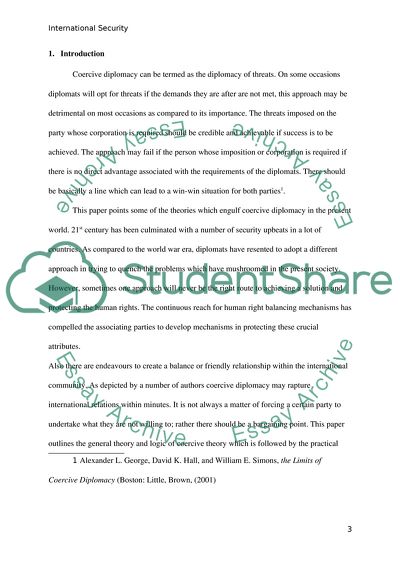Cite this document
(How Effective Are Strategies of Coercive Diplomacy in Pursuing Term Paper - 1, n.d.)
How Effective Are Strategies of Coercive Diplomacy in Pursuing Term Paper - 1. Retrieved from https://studentshare.org/politics/1808737-how-effective-are-strategies-of-coercive-diplomacy-in-pursuing-international-security-answer-with-reference-to-recent-examples
How Effective Are Strategies of Coercive Diplomacy in Pursuing Term Paper - 1. Retrieved from https://studentshare.org/politics/1808737-how-effective-are-strategies-of-coercive-diplomacy-in-pursuing-international-security-answer-with-reference-to-recent-examples
(How Effective Are Strategies of Coercive Diplomacy in Pursuing Term Paper - 1)
How Effective Are Strategies of Coercive Diplomacy in Pursuing Term Paper - 1. https://studentshare.org/politics/1808737-how-effective-are-strategies-of-coercive-diplomacy-in-pursuing-international-security-answer-with-reference-to-recent-examples.
How Effective Are Strategies of Coercive Diplomacy in Pursuing Term Paper - 1. https://studentshare.org/politics/1808737-how-effective-are-strategies-of-coercive-diplomacy-in-pursuing-international-security-answer-with-reference-to-recent-examples.
“How Effective Are Strategies of Coercive Diplomacy in Pursuing Term Paper - 1”, n.d. https://studentshare.org/politics/1808737-how-effective-are-strategies-of-coercive-diplomacy-in-pursuing-international-security-answer-with-reference-to-recent-examples.


